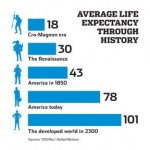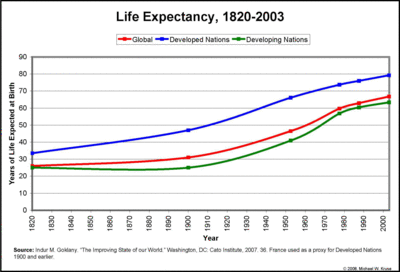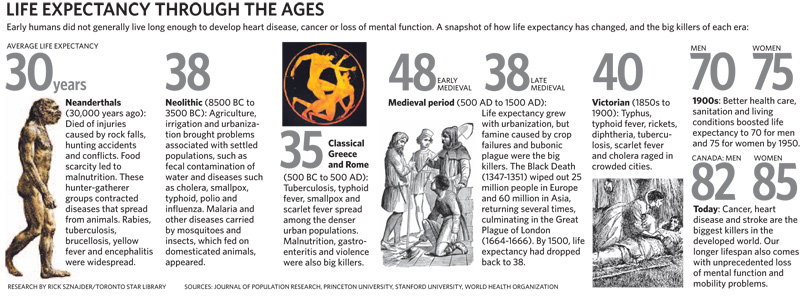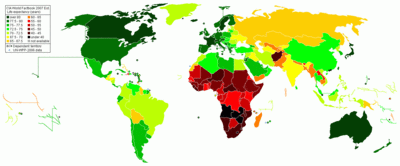Formal apprenticeships were 7 years, when average life expectancy was around 40 years. By the 20th century, when average life expectancy was around 70 years, up to 16 years of education began at age 6.
 Average life expectancy is a measure of prosperity becasue it requires a complex mix of variables: a sustained nutritious food supply, a sanitary and safe environment, relatively little disease, absence of war, and a stable society.
Average life expectancy is a measure of prosperity becasue it requires a complex mix of variables: a sustained nutritious food supply, a sanitary and safe environment, relatively little disease, absence of war, and a stable society.
Using life expectancy as a measure of prosperity, the world is far more prosperous than it has ever been. The trajectory of change is an unprecedented rise in prosperity and average life expectancy.

Most of this change occurred when the total world population grew sixfold, from less than 1 billion in 1800 to about 6.6 billion today.
Every corner of the planet has improved and the gap between nations is closing.
Lifespans of 35 years were enough to engage seriously with 1 or 2 life partners and see 1 generation of children grow up.
Lifespans of 70 years or more may include several life partners and potentially see 3 generations of descendants grow up.
What is lifelong learning?
For most of its existence, Homo sapiens lived in far flung hunter and gathering communities, each of which was quite small and barely able to reproduce itself. Life expectancy at birth was hardly twenty five years on average, and those persons who survived childhood often died violently, in combat with other hunters, at relatively young ages.
(Robert William Fogel, The Fourth Great Awakening and the Future of Egalitarianism, 48)
For much of human history, average life expectancy used to be 20-30 years. By 1900, it had climbed to about 31 years … By 2003 it was 66.8 years.
(Indur Goklany, The Improving State of the World, 31)

